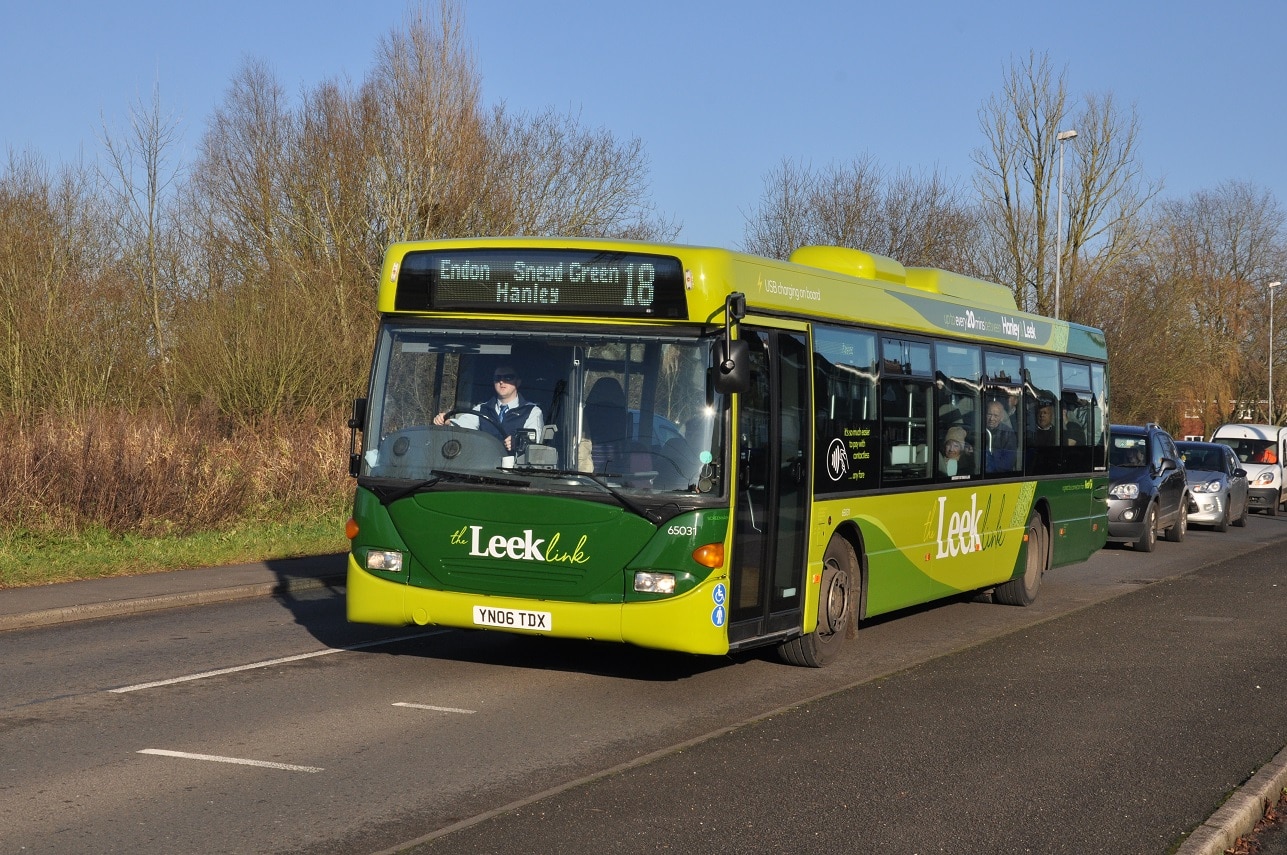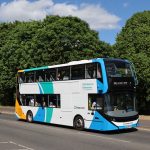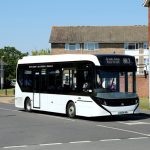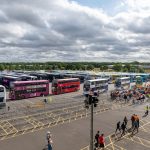Arguments for and against bus route branding are numerous. But where the concept is applied in an appropriate way it can deliver benefits – and quickly. That’s the experience of First Midlands, which is in the process of rolling out some distinctive brands across its territory.
It was in Worcester where the current round of branding began, although some of First Midlands’ fleet already carried more muted route-specific lettering. Ray Stenning’s Best Impressions consultancy delivered the individual designs that are now involved.
“We went ahead with Salt Road branding for our 144 service in Worcester over a year ago and the response from the local community was excellent,” says MD Nigel Eggleton.
Year-on-year patronage growth on the 144 has been above 6%, including farepayers. However, that has come at the southern end of the service, between Worcester and Bromsgrove. Frequency there is double that of the northern portion, beyond Bromsgrove to Birmingham.
The Salt Road identity was introduced on a batch of mid-life Volvo single-deckers. Another key to the project was their heavy upgrade by Thornton Bus Refurbishment.
“There has been an understandable slowdown in the level of capital expenditure in new vehicles. But we can use what money is available to refurbish and rebrand existing stock. Each mid-life bus can be treated for around 10% of the cost of a new one,” adds Nigel.
Bus route branding: Expand the idea with refurbishment
Following the general success of Salt Road branding, a Nimrod identity was introduced for another route in Worcester. Its buses were also heavily refurbished. More recently, the bespoke livery concept has expanded to both Leicester and Staffordshire.
“We are in the process of refurbishing and rebranding 13 Scanias at Adderley Green depot. Some are for The LeekLink service from Hanley to Leek and the others are for The Knotty, which will go to Stafford,” says Nigel.
Although the concept is the same as at Worcester, the finished product has moved on in the meantime.
The Scanias have seatback phone holders, something that was suggested by Thorntons Bus Refurbishment. They complement recovered and high-backed seats, internal branding, wi-fi and wood-effect flooring.
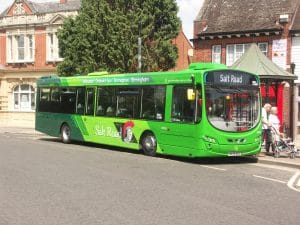
As the Scanias are older than the Worcester Volvos – they date from 2006 – they are receiving entirely new floors.
At the time of writing, The LeekLink buses had entered service and The Knotty examples were in the process of being treated.
Because of that timescale, it is not possible yet to see whether the new local identities have generated growth in Staffordshire, although First is hopeful that they will deliver similar results to the Salt Road brand.
There are early signs that may prove to be the case. The LeekLink buses were launched a few weeks ago. Even though the OmniCitys retain their 06 registrations, a number of customers thought that they were new after seeing the scale of the refurbishment.
Simplicity may be a better option
Alongside its work to refurbish buses, First Midlands has undertaken simpler rebrands where vehicles are not touched internally. Instead, they only received a new livery, again from the Best Impressions consultancy.
That has happened at all three businesses. In Staffordshire, a Kingfisher identity has been applied to three double-deckers for a service to Uttoxeter. In Leicester, two route-specific liveries have debuted, and the concept can also be seen in Worcester.
“For the Braunstone Bus in Leicester all we have done is a repaint in a new livery. The buses concerned were tidy inside. Even so, we’ve seen a similar level of patronage growth to the Salt Road,” says Nigel.
One of the keys to that growth is creating a feeling of local ownership, he continues. In the past, First took a regimented view of corporate identity. That has relaxed under different management. Doing so removes possible suggestions that the operator is an anonymous corporate giant.
Effective management is required
Although those routes that have seen rebranded vehicles largely show that route branding – either on its own or in tandem with refurbishment – works, Nigel is alive to both its challenges and the risk of growth not justifying the investment.
So far First Midlands has no plans to individually brand other services. It’s likely that some will not lend themselves to the exercise. Additionally, there is a risk that too many individual liveries could become overly difficult to manage.
In North Staffordshire and Worcester, where vehicles have received internal refurbishment, each depot has received a pair of generically liveried buses to the same specification. They are for use as required.
“Bus route branding requires constant attention to detail,” says Nigel. “It’s natural to invest in the jewels of any network, but at the same time we must accept that we can’t do every route. Time will tell whether we brand more.”
Giving a service an individual identity does not detract from the fact that a customer’s priority is reliability. That must always be at the heart of what an operator does, says Nigel.
But in an era where capital expenditure is being squeezed across the board, returning a perception of local ownership is among the few easy wins available to operators – where the circumstances are right.




















